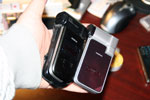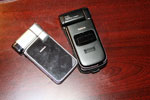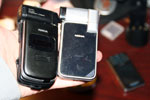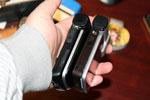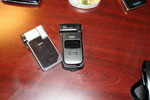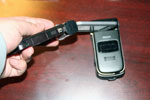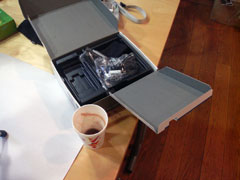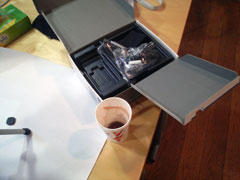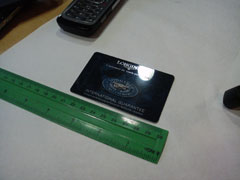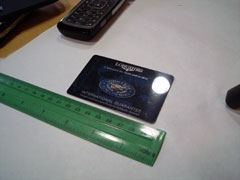|
|
Review of GSM\UMTS-smartphone Nokia N93i
Live photos of Nokia N93i
Sales package:
- Nokia N93i phone
- Adobe Premiere Elements 3.0 PC software
- Nokia Battery BL-5F, 950 mAh
- Nokia Travel Charger AC-4
- Nokia Wired Headset HS-23
- Nokia Connectivity Cable CA-53
- Nokia Video-out Connectivity Cable CA-64U
- Nokia miniSD Card 1GB MU-24
- Nokia Soft Pouch CP-83
- Nokia Wrist Strap CP-130
Despite all the hype around Nokia N93, its users are techi guys alone, and moreover the sale rates are quite moderate. The problem was that an unsophisticated consumer is not yet ready to drag along a bulky device with him, even though it has Nokia engraved on it, shows off great video recording quality etc. So the goal set for the N93’s successor was not introducing some new features or software upgrade up to Feature Pack 1 – Nokia N93i presents us only with modifications that have something to do with its looks, specifically now we have something to choose from – grey or brick red trims. Both colors feature mirror-finished front panel, which is all the rage nowadays – just remember “emotional” products by Sony Ericsson, sporting just the same trinket, for example Sony Ericsson Z310i, Z610i. Naturally such surface gets soiled in no time, but your or whomever looks at it, eyes are going to be very pleased.


The dimensions of the N93i are nothing to should about either – while the N93 comes in at 118õ55.5õ28 mm and 188 grams, the newcomer features 108x58x25 mm and 163 grams. Bluntly speaking, dubbing this handset as “so-much-more-portable” wouldn’t be the right thing, that’s why the way the N93i will be treated in won’t change too much, since the most crucial flaw of the phone is neither height nor width, but is thickness, brought about by such awesome camera module found inside, even though it has been shape-changed in the N93i. In-hands experience of the N93i is no different from what we felt with its predecessor, although the top half has become much lighter, it doesn’t make all the difference in the handset’s image.








In pursuit of smaller size they had to shave off some of the handset’s battery life along with “spare” centimeters – the N93i carries onboard a 950 mAh Li-Ion battery (BL-5F), while its counterpart, Nokia N93 made use of the BP-6M capacious of 1100 mAh. But the difference in terms of overall lifetime figures won’t be too striking – previously the phone put up 2 days of operation and now it is 1.5-2 days – a thing that can be dealt with. And those power users among you should not worry – for you the N93i still have only one day. As the manufacturer claims the N93i can provide up to 3.9 hours of talk time and up to 275 hours of standby.




In the review on Nokia N93 your humble servant pointed at the 128x36-pixels color external screen being not a justified solution – the picture was bad at any rate, while reading from such display in the sun was a pain. Over at Nokia they have come to the same conclusion and put under the mirror plate a OLED screen sporting the same resolution and displaying up to 65 K colors, but the dominating tones are always monochrome pastel colors, which allows the phone to keep the picture in acceptable state in various environments and on top of that this color perfectly matches the mirror finish of the handset’s face. The display is topped by an indicator having a pair colors onboard – green or blue depending on active mode.

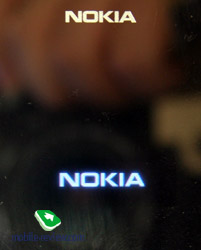
On incoming call the external screen gets filled up either with the caller’s name or his number, and a variegated animated handset. Status indicators of signal’s strength and battery charge are curved a little adding some fashion points to the N93i.
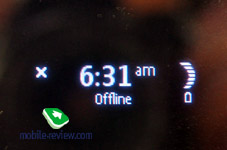 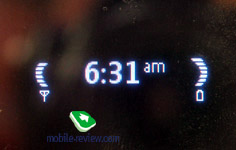
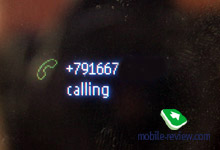 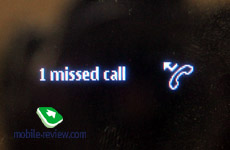
Another thing that Nokia has made more easy-looking is the keypad, where they have made the best use of the concept found in Motorola’s slim solutions and rushed for leaving out bulky and bulging buttons in favor of an unsophisticated metal plate with barely-there click feedback. While this allows shaving off a millimeter or two off the casing’s thickness, such approach is an obvious decline for the keypad’s ease-of-use. When handling a device this big, you usually expect the keys to be way easier on your fingertips.



The manufacturer has addressed the issues regarding the side-mounted flaps, and now Pop Port is protected by a plastic drop-out latch (whereas on the original N93 it was a rubberized flap). The slot for miniSD cards has become much easier to manage as well – now you won’t have a hard time accessing it. What I mean by all this is that in the sense of such minor tweaks the handset turns out to be way ahead of its forefather. The eye on the bottom end looks better on the N93i and moving the Infrared window from the top end of the upper half onto the side has brought some benefits as well. The layout and design of controls is much more eye-candy and handy on the N93i, which is a big plus.
The hinge hasn’t changed a bit, nor have the modes the N93i has to offer.


Thus, the top half of the folder may be twisted – the double joint is located on the right part, to cut a long story short, you can open the device like any other clamshell, or push the upper part sideways, thus the screen will be horizontally-orientated in the first place. The second degree of freedom allows twisting the main display towards you once you have unfolded it – this reminds of the portable video cameras, which use just the same mechanism. These actions actually lead to different modes, automatically recognized by the system. So when the screen is turned towards you and normal to the main block, camera capabilities will be called up without your help.



The power key sits on the top rim, the same button stands for switching profiles while in standby mode.
The right side features camera shortcut keys. The shutter button, marked with a red point, originates from usual digital cameras, as well as a ring rounding the key, which performs zooming in/out actions. The navigation key with OK button placed inside is located a bit lower – it’s used for changing camera modes and browsing through the menus, not in camera application. Frequently this very button allows managing the handset single handedly; however the dimensions override this handy possibility. Dedicated flash button becomes flashlight trigger while in standby mode – to tell the truth this might be the only application of the flash, as it doesn’t make much difference when taking pictures, because it’s rather weak. The side “OK” button locks and releases keypad lock, and once again, you can hardly make use of it. The Shutter key turns the external display into monochrome one, where you are shown current date and time.

The reason why the camera is integrated into the upper rim is not its actual measurements, but rather presence of optical zoom. Size of the matrix has remained pretty small and equals 4.5õ5.5 mm, therefore images quality is not too far ahead of the competitors, however implementation of glass lens and considerable focus length allow acquiring good results. A small hood covering the lens which can be fastened to the casing with a strap is also an appealing detail. All in all, the manufacturer has succeeded in creating an illusion of a tiny amateur camera.

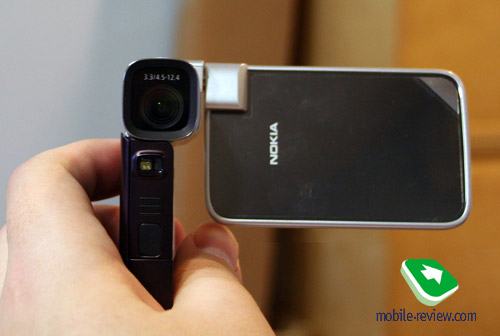
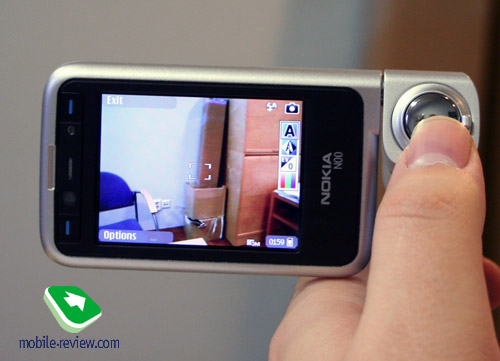
Unfolding the device reveals the internal screen with a CIF-camera located right above, which steps in when making video calls, yet you are at liberty to take pictures with it as well, though there is no practical use in it. Similarly to Nokia N93 this camera is equipped with flash, highlighting you in the dark if needed.
The area over the display contains two buttons, execution various functions in some applications, however their primary predestination becomes obvious when in camera mode, namely they call up advanced options menus. The truth is, it is hard to operate these buttons some times due to considerable weight of the handset, although when holding the device sideways, they are more than just handy.

The internal QVGA-screen (240x320 pixels, TFT) is nothing new to the market, measuring 2.4” diagonally and being a standard for the current gen models. Capable of 16 mln colors the N93i is far superior to its brother-in-arms that could boast only 262 K. You don’t need to be a sophisticated person to note that quality-wise the display has improved much upon the previous model – the picture looks crisper and more color-saturated, whereas on Nokia N93 it looks as if it is washed out a bit – in real life the difference is more than striking, sample photos won’t give you a comprehensive idea of how great the improvement is.
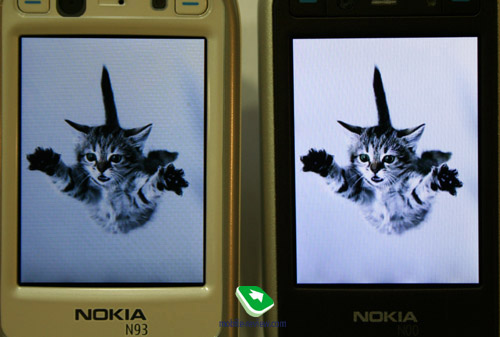
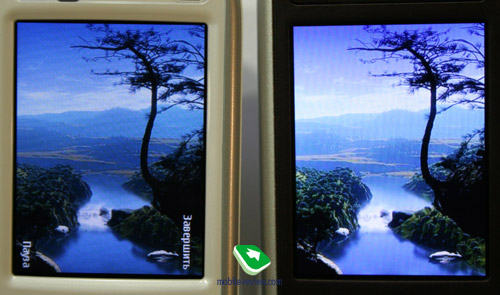
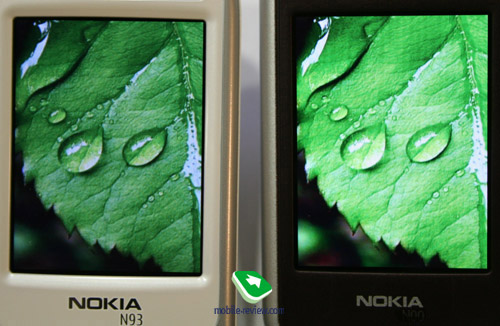
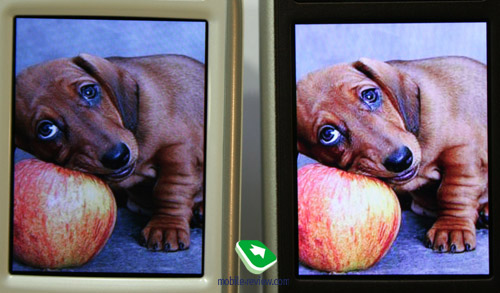
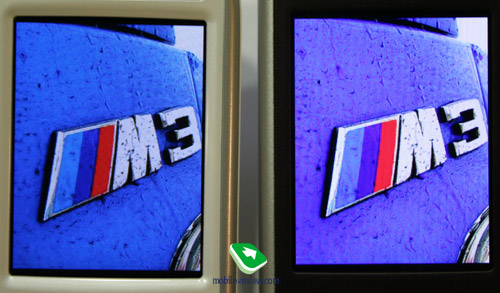
Camera in Nokia N93i is what the maker approached with a pint of creativity, specifically, analyzing preferences of users via Nokia N73 and a couple of other products, the company found out that picture quality and its realistic looks, were crucial for a very small group of people. In fact, vast majority of consumers use their phones to demonstrate snaps, rarely transfer them to PC for public showcases. In such way, picture quality is not what everything is about, how it looks on the screen is more important.
Shots size taken with Nokia N93i is approximately 30 percent smaller due to altered image processing algorithm, yet it takes the same time to run. Nevertheless files come out smaller in size, details suffer, and colors get to be less natural. In terms of hardware the N93i’s camera module is the same as that found in Nokia N93, but software-wise there are two shoes of different color. To please tastes of an average consumer the manufacturer has also altered the settings. But to me, it is a totally wrong approach, and what is more, it is backed up with nothing. The resulting solution is clearly inferior to Sony Ericsson K790/K800, as the snaps quality provided by Nokia N93i is worse. If you are looking for a Nokia-branded product with a top-notch camera, then it comes down to a single option – Nokia N93. Nokia N95 is comparable, but it makes use of a non-optimal shots processing algorithm.
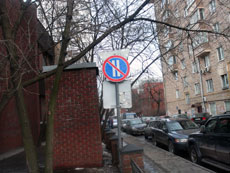 |
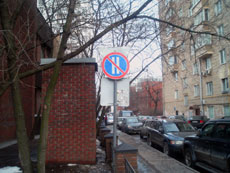 |
N93 (+)
maximize, 2048x1536, JPEG |
N93i (+)
maximize, 2048x1536, JPEG |
 |
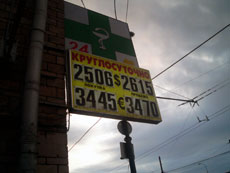 |
N93 (+)
maximize, 2048x1536, JPEG |
N93i (+)
maximize, 2048x1536, JPEG |
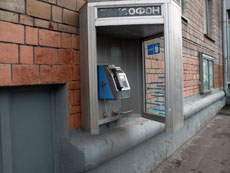 |
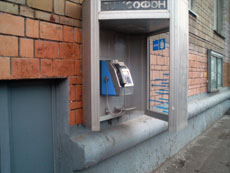 |
N93 (+)
maximize, 2048x1536, JPEG |
N93i (+)
maximize, 2048x1536, JPEG |
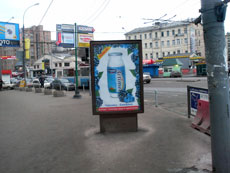 |
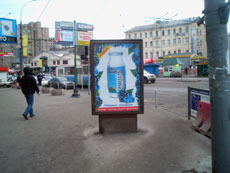 |
N93 (+)
maximize, 2048x1536, JPEG |
N93i (+)
maximize, 2048x1536, JPEG |
 |
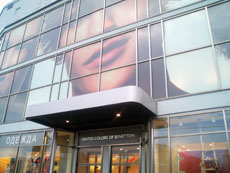 |
N93 (+)
maximize, 2048x1536, JPEG |
N93i (+)
maximize, 2048x1536, JPEG |
 |
 |
N93 (+)
maximize, 2048x1536, JPEG |
N93i (+)
maximize, 2048x1536, JPEG |
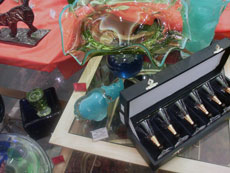 |
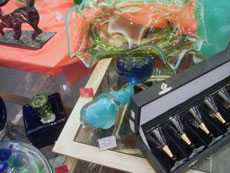 |
N93 (+)
maximize, 2048x1536, JPEG |
N93i (+)
maximize, 2048x1536, JPEG |
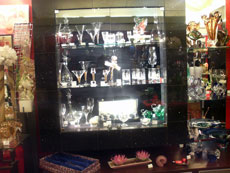 |
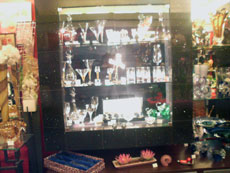 |
N93 (+)
maximize, 2048x1536, JPEG |
N93i (+)
maximize, 2048x1536, JPEG |
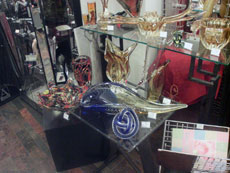 |
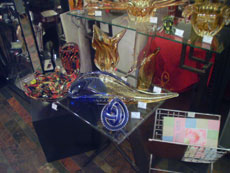 |
N93 (+)
maximize, 2048x1536, JPEG |
N93i (+)
maximize, 2048x1536, JPEG |
 |
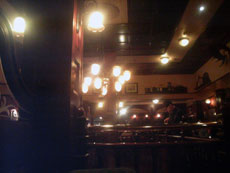 |
N93 (+)
maximize, 2048x1536, JPEG |
N93i (+)
maximize, 2048x1536, JPEG |
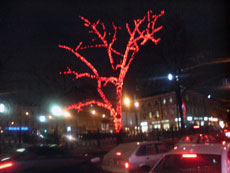 |
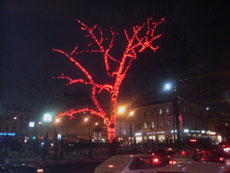 |
N93 (+)
maximize, 2048x1536, JPEG |
N93i (+)
maximize, 2048x1536, JPEG |
 |
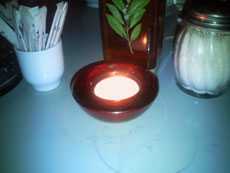 |
N93 (+)
maximize, 2048x1536, JPEG |
N93i (+)
maximize, 2048x1536, JPEG |
Video is captured with somewhat worse quality too, which you can see for yourself on the samples; Nokia N93 more natural-looking colors, does well at showing particular details, yet it outputs clips weighting 20-30 percent more. Also sound volume and quality are higher for Nokia N93 thanks to its dual-speaker system.
Sample video 1 - N93i (mp4, 15.7 Mb)>>>
Sample video 1 - N93 (mp4, 16.4 Mb)>>>
Sample video 2 - N93i (mp4, 5.8 Mb)>>>
Sample video 2 - N93 (mp4, 7.3 Mb)>>>
I have to say now that all this holds true only for the latest firmware versions for Nokia N93 and units manufactured lately. At the same time the idea of recording stereo-sound for clips has proven to be flimsy – due to the microphones being positioned close enough to each other it was somewhat out of place. Nokia N93i’s sole microphone provides you with acceptable capabilities – we didn’t hear any tremendous differences in quality or clarity of the sound.
Short summary on camera is as follows: despite identical hardware filling and the camera module, they have made it worse software-wise. Saving some bytes on memory card is no object, I suppose, owners of this device value quality over clips size. The foremost aspect of this device is its camera, and it has been artificially degraded. The only reason for this is new positioning of the device towards glamorous audience.
Menu and other features
We don’t see any point in reviewing standard features on S60 3rd edition all over again, as they are covered in a dedicated article. Generally speaking, the N93i is almost an exact replica of Nokia N93, basically they did only minor patch job, altering the applications suite and layout of some menus.
The platform this models runs on is no different from what we saw on Nokia N93. Processor is operating at 314 MHz, this has been subjectively proven by tests, and results were very high. Amount of RAM is 32 Mb, meanwhile 50 Mb are dedicated for user’s needs. Amount of memory is not so big, especially if you take high-res camera into consideration, so the first thing you have to buy in case you are planning to take a lot of photos – is a 2 Gb memory card.
Continuous evolution of interfaces has led to fact that nowadays Nokia smartphones have audio and video ins, which makes it possible to connect them to common household devices. Cable has standard “tulip” connectors on one side, and Fast-Port connector on the other. Phone supports following standards: PAL, NTSC. In settings menu you can select display’s geometry – 16:9 or 4:3. This way signal will be recognized instantly, and the picture will appear on both the handset and the TV. And it’s not only viewing photos or video clips that you can do, you can also play games, browse menu, do whatever you like. But main reason for this cable is still viewing multimedia, games do not look so good on TV, and menu is quite hard to browse as well.
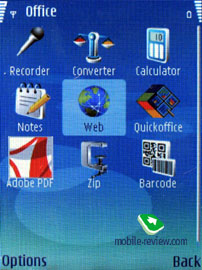
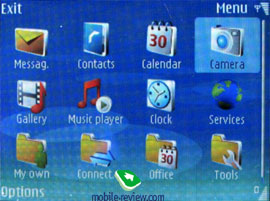
Besides cable, there is another, more convenient way of displaying multimedia content on screen of your TV or PC – it can be transferred via WiFi. You must have required software on PC or a special multimedia center that supports WiFi. Technically, working with such technologies is no harder than sending file via Bluetooth. In future as conception of “intelligent house” goes on expanding, more and more devices that support connection with mobile phones, and interaction with them will appear, and it’s not only about TVs, it’s much more than that.
Handset supports Dual Transfer Mode (DTM), this allows transferring voice and data in GSM/EDGE networks at same time, this is A class device (multi slot class 11). A nice ability that makes this smartphone closer to UMTS terminals that have this functionality by default, without being one. One thing should be noted though, in case if operator is not supporting DTM, there is no way you can use it. At same time, there’s still EDGE B Class, multi slot class 32.
Handset can be connected to PC via USB. There are three modes, you can select one of them as default, and it will be automatically enabled when you connect your handset to pc:
- Mass storage – you connect your handset as storage device, no drivers are required in this mode;
- PS Suite – standard mode;
- Picture Bridge – direct printer connection that supports this standard.
Well, there’s almost no need in mentioning Bluetooth module’s presence, it became sort of standard for smartphones. As for version, it’s 2.0, and following profiles are supported: Basic Printing Profile, Generic Access Profile, Serial Port Profile, Dial-up Networking Profile, Headset Profile, Handsfree Profile, Generic Object Exchange Profile, Object Push Profile, File Transfer Profile, Basic Imaging Profile, SIM Access profile è Human Interface Device Profile. Several connections can be made simultaneously. As for Bluetooth’s drawback: there’s no A2DP profile support (stereo headset).
This handset has Wi-Fi (IEEE 802.11 g) support. All security standards are supported: WEP , WPA , WPA 2, settings are maximally advanced, although it’s hard to compare it with Zero Configuration in Windows Mobile in terms of convenience of connecting. Device supports Universal PnP standard (UPnP), which is successor of wired standard PnP. With its help and usage of Wi-Fi you can send slides to TV, music to stereo system, and photos to printer. At some point UPnP is similar to upgrade over infrastructure (to Wi-Fi as example), especially if you compare it to Bluetooth-like services, this looks like software upgrade. So far support of this standard is interesting from theoretic point of view, but it’s still something like tomorrow when we see this standard being widely implemented, although the list of companies that support this standard today is quite impressive. You can get acquainted with documentation on UPnP here. A software named Home Media Server is shipped on Software DVD, it allows connecting through home Wi-Fi network to desktop PC.
Music player did not get any updates. Support of Janus DRM means full synchronization with Windows Media Player 11, when connected via USB, handset will turn off network block, and offers synchronization with this software. You can transfer playlists, songs from PC to handset.
Music Library offers viewing all music files stored in phone’s memory or memory card, they can also be sorted by genre, artist, album or composer. Library can be updated automatically when you add new music files. Unfortunate news for those who plan storing large music collections – there is no search function at all. You can only view songs manually via corresponding sections. On the whole player is similar to different models produced by Nokia, except for Nokia N91. As for sound quality, it’s ordinary, and is different from Nokia N91.
Handset supports following music formats: eAAC+, AAC+, M4A, MPEG-4 ACC LC, LTP, MP3, AMR-NB, AMR-WB, 64 polyphonic MIDI, WMA. Most interesting ones are: mp3 (all bit rates are supported, including variable), AAC in all modes (for iTunes users), and actively promoted WMA from Microsoft.
For any playlist you can enable shuffle, as well as repeat one or all songs. There are several preinstalled equalizers, you can adjust them manually. Well, it’s not like you will notice much difference when switching between them, in order to actually do that, try setting up last settings. Player can be minimized, in this mode you will see song title and its playback time in stand by screen.
Built-in FM radio supports Visual Radio upgrade, when text and image will be downloaded from radio’s site. This function looks rather exotic, and it failed to get many followers. As for ordinary radio, it supports not only 87.5 to 108 MHz diapason, but also from 76 to 90 MHz.
Impressions
It will make you laugh that Nokia N93i in fact has almost no improvements over the original Nokia N93, tiny win in dimensions aside. The ergonomics of the keypad is mediocre, as folding the phone open is quite challenging because the flip is too thin, the camera has gotten worse as well. With this comes an insight that this model is meant for the fashion-conscious audience alone, as well as its glass-finished facepanel, while the price is not the thing that matters. In all other ways the new handset makes no sense – the original Nokia N93 proves to be just better.
Nokia N93i is scheduled to being shipping in the end of February at a price of 600 Euro (tax-free price). On the Russian market, though, its price might rocket up to 850 Euro, meaning that the N93i flies out of the mass market in an eye-blink, ending up in a category of device aiming at moderate sales even their domains. If you already own a Nokia N93, then going for the N93 doesn’t make any sense – you won’t get wholly new experience, everything will feel just the same way it did. Newcomers, on the other hand, should take a closer look at this handset, in case they are looking for what Nokia N93 delivers functionality-wise and were about to buy it. But for vast majority of consumers Nokia N93i as an option on their short-lists is not very interesting, since the market has Nokia N73 to offer, which shows off better still-image quality and worse video recording in a much more portable casing armed with stereo-speakers and some other fetching attractions.
Related links:
Eldar Murtazin (eldar@mobile-review.com)
Translated by Oleg Kononosov (oleg.kononosov@mobile-review.com)
Published — 16 January 2007
Update - 29 March 2007
Have something to add?! Write us... eldar@mobile-review.com
|
News:
[ 31-07 16:21 ]Sir Jony Ive: Apple Isn't In It For The Money
[ 31-07 13:34 ]Video: Nokia Designer Interviews
[ 31-07 13:10 ]RIM To Layoff 3,000 More Employees
[ 30-07 20:59 ]Video: iPhone 5 Housing Shown Off
[ 30-07 19:12 ]Android Fortunes Decline In U.S.
[ 25-07 16:18 ]Why Apple Is Suing Samsung?
[ 25-07 15:53 ]A Few Choice Quotes About Apple ... By Samsung
[ 23-07 20:25 ]Russian iOS Hacker Calls It A Day
[ 23-07 17:40 ]Video: It's Still Not Out, But Galaxy Note 10.1 Gets An Ad
[ 19-07 19:10 ]Another Loss For Nokia: $1 Billion Down In Q2
[ 19-07 17:22 ]British Judge Orders Apple To Run Ads Saying Samsung Did Not Copy Them
[ 19-07 16:57 ]iPhone 5 To Feature Nano-SIM Cards
[ 18-07 14:20 ]What The iPad Could Have Looked Like ...
[ 18-07 13:25 ]App Store Hack Is Still Going Strong Despite Apple's Best Efforts
[ 13-07 12:34 ]Infographic: The (Hypothetical) Sale Of RIM
[ 13-07 11:10 ]Video: iPhone Hacker Makes In-App Purchases Free
[ 12-07 19:50 ]iPhone 5 Images Leak Again
[ 12-07 17:51 ]Android Takes 50%+ Of U.S. And Europe
[ 11-07 16:02 ]Apple Involved In 60% Of Patent Suits
[ 11-07 13:14 ]Video: Kindle Fire Gets A Jelly Bean
Subscribe
|
